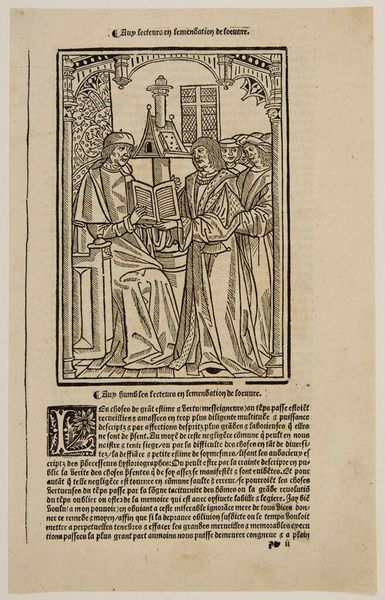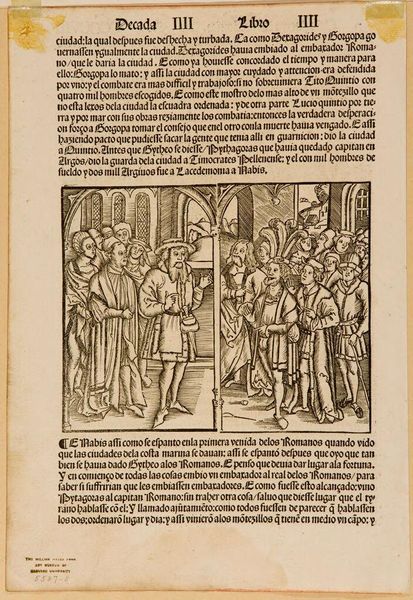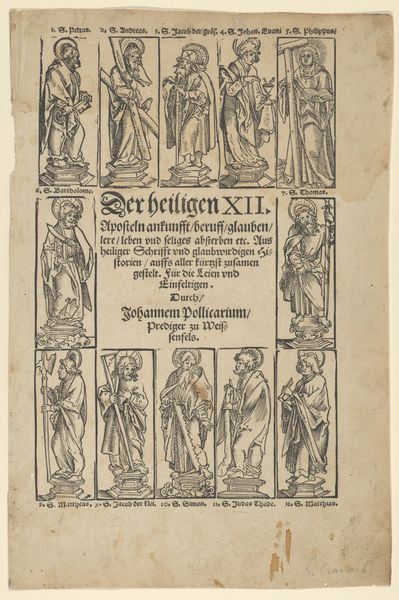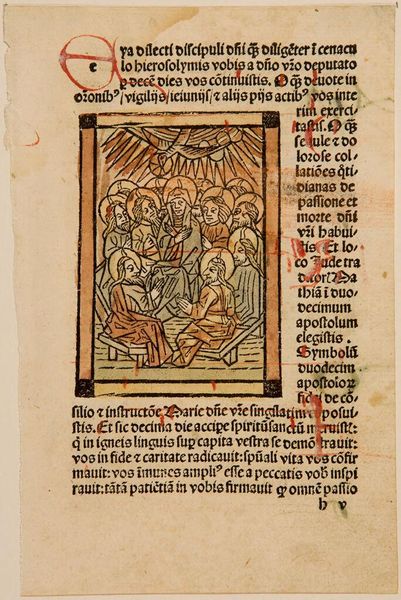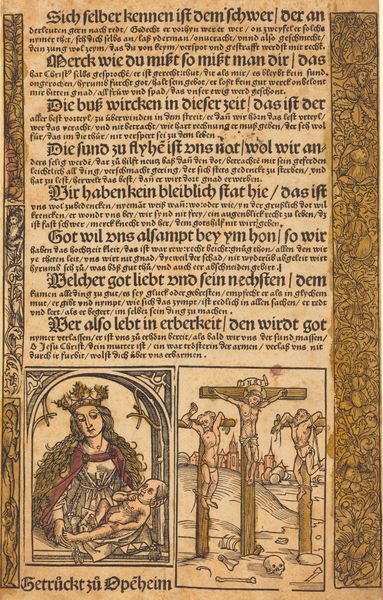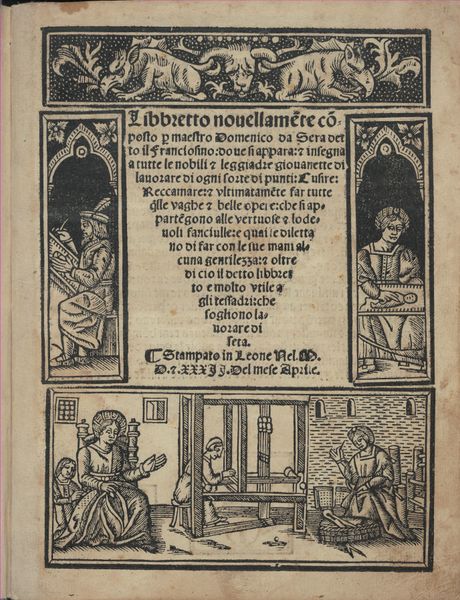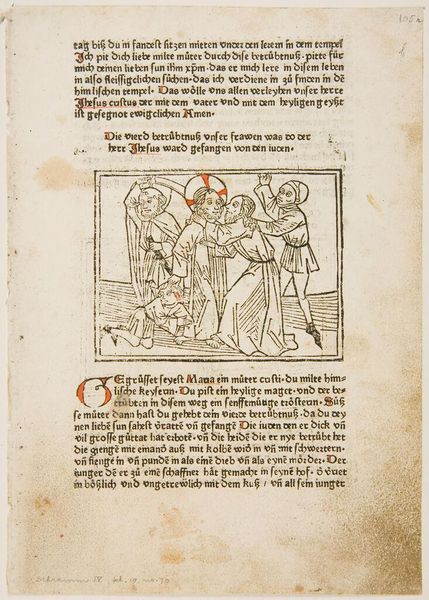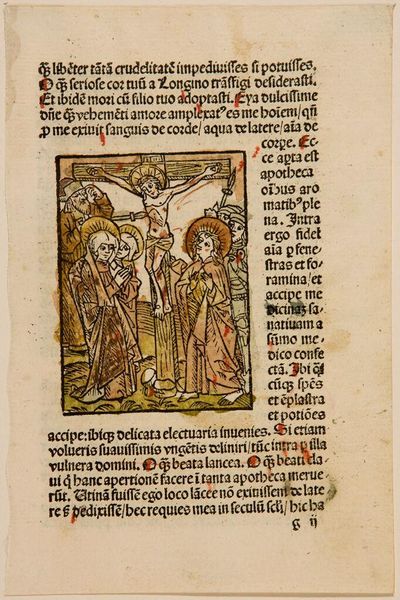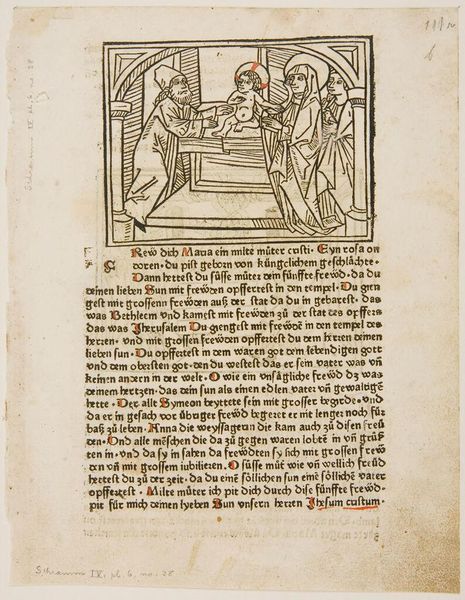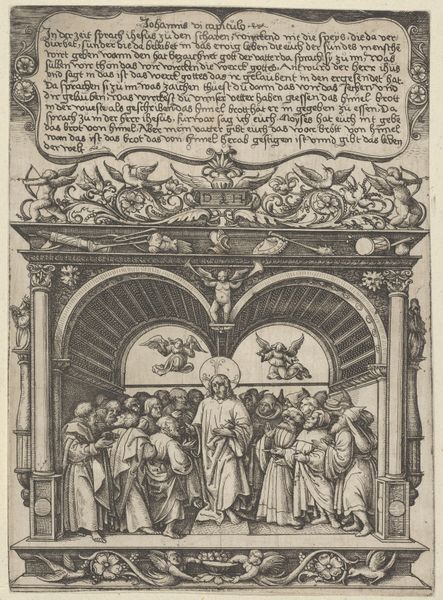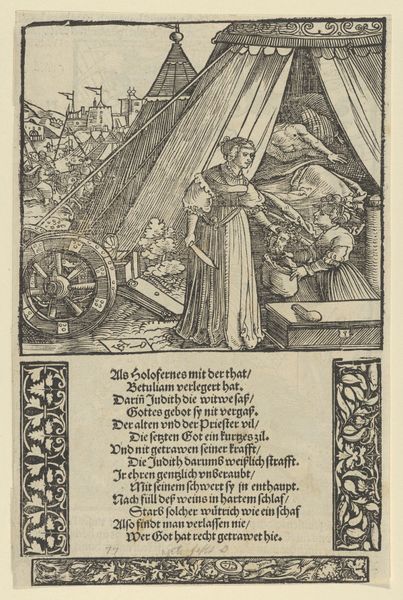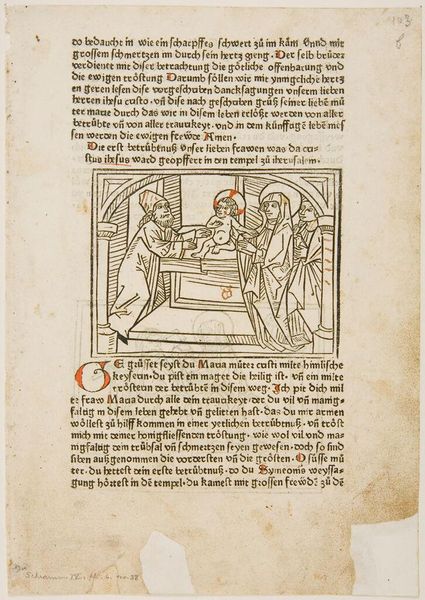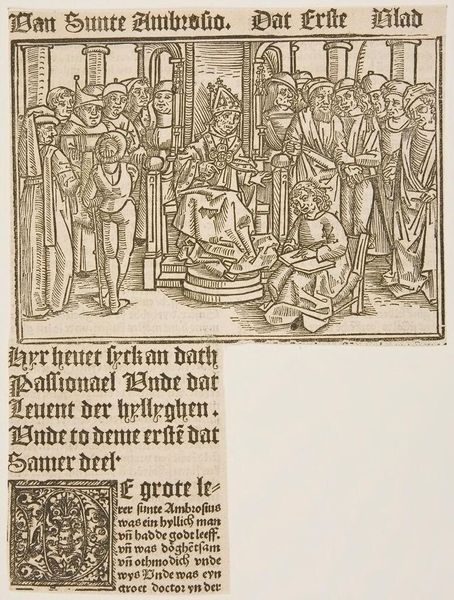
print, woodcut
#
medieval
#
narrative-art
# print
#
woodcut
#
history-painting
#
northern-renaissance
Dimensions: height 122 mm, width 90 mm
Copyright: Rijks Museum: Open Domain
Curator: This is an early woodcut print, titled "Heilige drie-eenheid," which translates to "Holy Trinity" and dates from between 1490 and 1510. It’s currently housed here at the Rijksmuseum, though the artist, unfortunately, remains anonymous. Editor: Right, anonymous… Immediately I’m struck by how crowded and, frankly, bizarre this feels. A bit chaotic. It’s clearly trying to be reverent, but there's an almost grotesque energy to it, with that stark black outline of everything and all these symbols fighting for space. Curator: Indeed. Its power stems from the density of symbols that compress into such a small image. You have the Trinity enthroned, Christ on the cross held by God the Father, flanked by earthly powers—monks to the left, kings to the right. Below, humanity suffers. Note how these figures are compressed within the limited space. Editor: The contrast is wild. These figures beneath look positively trapped, desperate in their tiny wooden… boxes? Compared to the Trinity looming above. It’s claustrophobic but compelling; a very earthly interpretation of divinity, isn't it? Look at the pope-like figure right at the center! Is that his representation? Curator: You’ve touched on an essential point. Consider the iconographic language; the disembodied hands, feet, and pierced heart floating at the top, referencing Christ's wounds; the complex heraldry, suggesting specific patronage and authority. It’s all a meticulously coded message for its intended audience. Each one serves as an essential symbol and component that communicates meaning about suffering and the promise of eternal salvation to its viewer. Editor: So it’s like a visual sermon, hitting all the main points for those who might not be able to read. Looking closer, it seems like a powerful indictment of worldly power alongside promises of faith. Like a medieval meme? Curator: Perhaps! A relatable shorthand for complex theological ideas. What resonates through this image is the intersection between divine promise and human experience. These northern renaissance artists were excellent at including images in very clever and meaningful ways that are not initially obvious to us centuries later. Editor: Agreed. Even with the chaos, or maybe because of it, I get a vivid sense of the fears and hopes of the time. Very memorable!
Comments
No comments
Be the first to comment and join the conversation on the ultimate creative platform.
